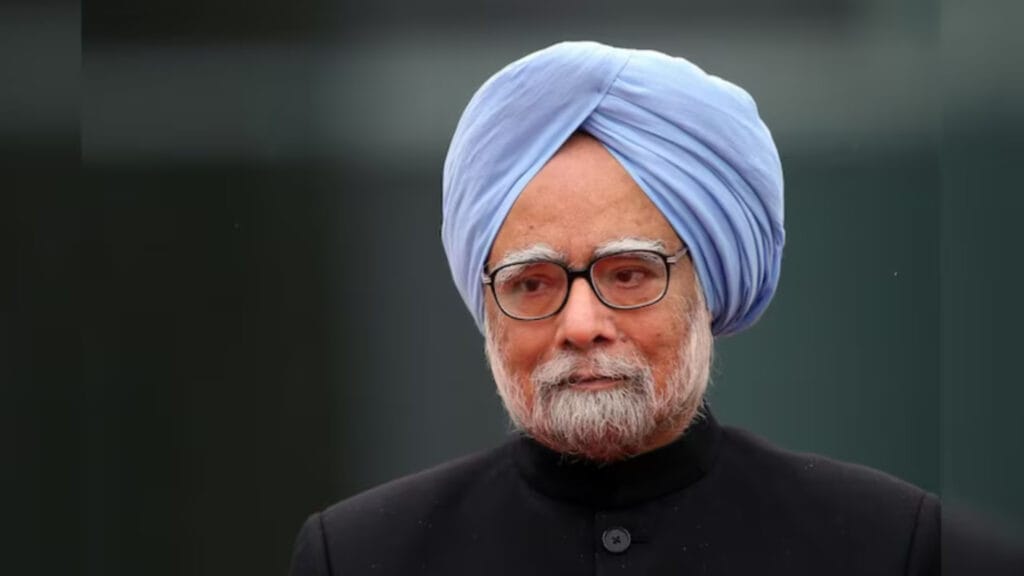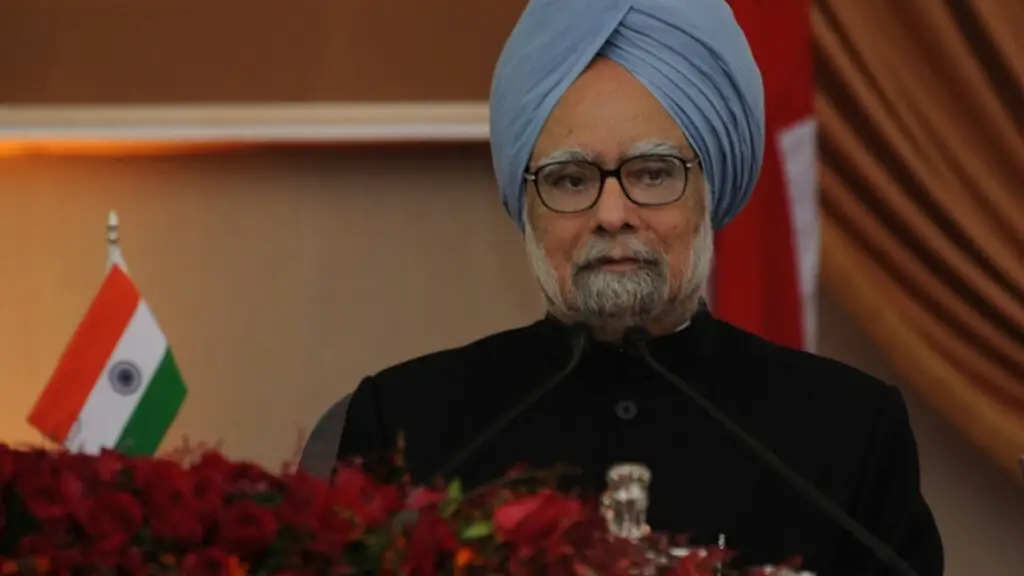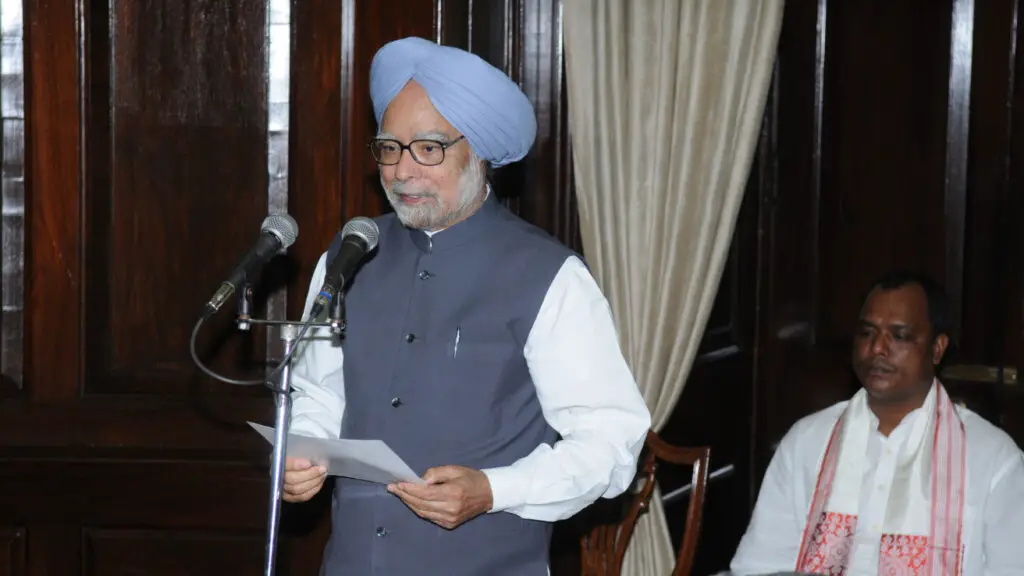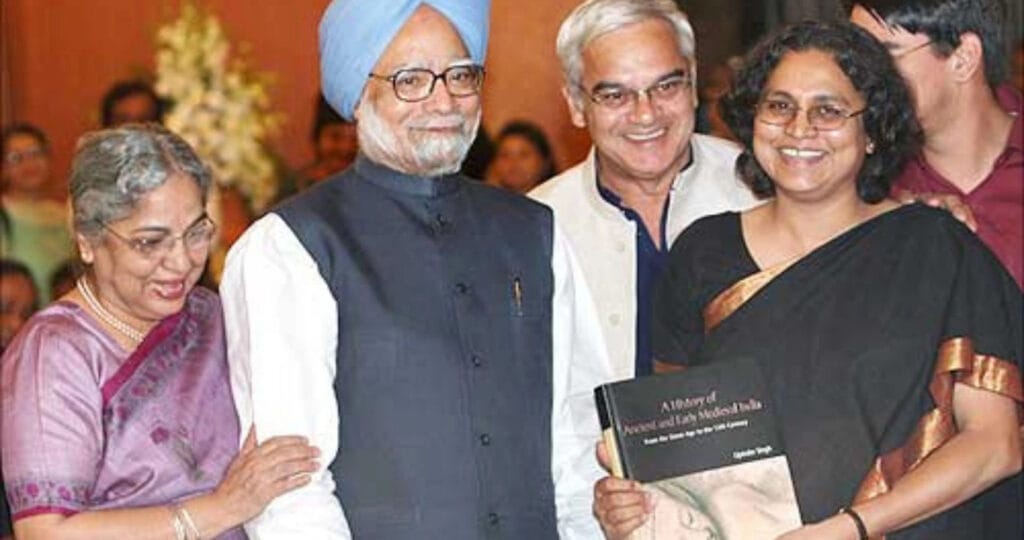Dr. Manmohan Singh was a prestigious economist and politician of India who died today on 26 December 2024 at the age of 92 at the All India Institute of Medical Sciences (AIIMS) of Delhi. He led India as the 13th Prime Minister of India from 2004 to 2014.
As an architect of India’s economic liberalization in 1991, Dr. Singh played an important role in changing the country’s economy.
His tenure as the Finance Minister from 1991 to 1996 introduced extensive reforms, which opened India for global markets and designed a platform for unprecedented development. This period marked a significant turn in India’s economic history, moving from the state-controlled economy to a more market-oriented approach.
Early life and family Background
Dr. Manmohan Singh was born on 26 September 1932 in the house of Gurmukh Singh and Amrit Kaur in Gah (now in Pakistan) in western Punjab. His father worked as a clerk by profession. His mother Amrit Kaur died when he was still a baby, from which he was raised by his grandparents Sant Singh and Jamuna Devi.

Naming (naming ceremony), coming from a deep religious Sikh family, took place at the holy claw Sahib in Hasan Abdal. His early education began at the age of four when he started learning Gurmukhi from Granthi at the village gurdwara.
At the age of five, Singh enrolled in a small Urdu-medium school in his village. This initial introduction from Urdu later proved useful, as even during his tenure as Prime Minister, he often wrote his speeches in the Urdu script.
After the partition of India in 1947, Singh’s family moved to Amritsar, where he studied at Hindu College. He completed matriculation from Punjab University in 1948. He then enrolled in Punjab University in Hoshiarpur, where he graduated with master’s degree in economics respectively and 1954 respectively, and finished first in his entire educational life.
Higher education abroad
Dr. Singh’s educational journey was marked by extraordinary performance from the beginning. His educational ability brought him to the University of Cambridge, where he completed his economics tripos in 1957. In Cambridge itself, Singh Zone came into contact with influential economic thinkers such as Robinson and Nicholas Kaldor, who shaped his understanding of its role in economics and social equality.
After his time at Cambridge, Singh received a D.Phil in Economics from Oxford University in 1962. His doctoral thesis, which was later published as “India’s export trends and possibilities of self -sufficient architect of India’s economic liberalization in 1991, Dr. Singh played an important role in changing the country’s economy.
His tenure as the Finance Minister from 1991 to 1996 introduced extensive reforms, which opened India for global markets and designed a platform for unprecedented development. This period marked a significant turn in India’s economic history, moving from the state-controlled economy to a more market-oriented approach.
Initial career
After completing his education, Dr. Manmohan Singh joined the faculty of Punjab University and prestigious Delhi School of Economics for some time. In 1971, he entered into government service as an Economic Advisor in the Ministry of Commerce, which was his long and prestigious career in public service.

His expertise soon gained recognition, due to which he was appointed as Chief Economic Advisor in the Finance Ministry after a year. These early roles allowed Singh to apply his academic knowledge to the real -world economic challenges, making the platform for his future impact on India’s economy.
Dr. Singh’s career as an economist came from 1991 to 1996 during his tenure as Finance Minister. Prime Minister P.V. Under the leadership of Narasimha Rao, Singh led transforming economic reforms, facing a serious economic crisis that liberalized India’s economy. These reforms marked a significant turn in India’s economic history, opened the market for foreign investment, reduced government control, and formulated a platform for unprecedented development.
Prime Minister post and heritage
Dr. Manmohan Singh was appointed as the first Sikh Prime Minister of India in 2004. He led the United Progressive Alliance (UPA) government for two consecutive terms as of 2014.

During his tenure, India experienced the highest GDP growth rate ever, reaching 10.03% in 2010-11. Under his leadership, India’s economy increased at a rate of 7.7% on average, which made the country the third largest economy in the world by 2014.
His government implemented important social welfare programs in 2005, including Mahatma Gandhi National Rural Employment Guarantee Act (MGNREGA), National Rural Employment Guarantee Act (NREGA), Right to Information (RTI) Act, and National Food Security Act in 2013, with objectives of which Reducing poverty and increasing transparency in governance.
Dr. Singh was led beyond domestic matters. He played an important role in strengthening India’s global status, especially through the Indo-US civil nuclear deal, which increased India’s international status and energy security.
Career of appreciation
Dr. Manmohan Singh has received several awards during his special career as an economist, educationist and politician. Here is the list of his most notable awards and achievements:
- Padma Vibhushan (1987): India’s second greatest civilian honor is given for extraordinary and distinguished service.
Euroman Award for Finance Minister of the Year (1993): Recognized for his important role in implementing economic reforms that liberalize the Indian economy. - Asiamoney Award for Finance Minister of the Year (1993, 1994): India was awarded for two consecutive years for his outstanding contribution to the financial sector.
- Jawaharlal Nehru Birth Centenary Award (1995): The Indian Science Congress was awarded for his significant contribution in economic policy and development.
- Adam Smith Award: He was obtained from the University of Cambridge for his extraordinary academic performance in economics.
- Wright award for specific performance: St. John’s College, Cambridge, was awarded for his academic excellence.
- Honorary Doctorate from Cambridge University: recognizing his scholarly contribution in the field of economics.
- Honorary Doctorate from Oxford University: strengthened his position as a reputed economist and educationist.
Major achievements and facts
- Economic Reforms Architect: As Finance Minister in 1991, Dr. Singh led transformative economic reforms, which liberalized India’s economy, attracted foreign investment and reduced government control.
- Record GDP growth: Under his leadership as Prime Minister, India achieved its highest GDP growth after independence of 10.03% in 2010-11.
- Social Welfare Program: Applied historical initiatives like National Rural Employment Guarantee (NREGA) and Right to Information (RTI) Act, focusing on reducing poverty and improving the quality of life of millions of Indians.
- Indo-US-US civil nuclear agreement: Played an important role in interactions on the agreement, which allowed India to access civil nuclear technology despite not signing the nuclear non-proliferation treaty.
- Global Financial Crisis Management: Raised India successfully during the 2008 global financial crisis, maintained economic stability and development.
- Prime Minister, who served the longest time outside the Congress party, held office for two consecutive terms from 2004 to 2014.
- Educational Career: Worked as a professor at Delhi School of Economics and held various prestigious positions including Chief Economic Advisor to the Government of India and Governor of the Reserve Bank of India.
- Parliamentary Career: Assam represents Assam in Rajya Sabha five times before going to Rajasthan in 2019.
Health Service Initiative: In 2005, the National Rural Health Mission (NHRM) was launched, which included five lakh community health workers. - Education Reforms: In 2009, introduced the Right to Education Act and established eight new Indian technology institutes (IITs) in various states.
Personal Life
Dr. Manmohan Singh married Gursharan Kaur in 1958. Gursharan Kaur is a history professor and writer, who has been constantly helpful in her life and career. The couple have three daughters: Upinder Singh, Daman Singh and Amrit Singh.

Family members
Upinder Singh
Upinder Singh is the eldest daughter of Dr. Manmohan Singh and Gursharan Kaur. She is a famous historian and currently working as a dean of the faculty at the University of Ashoka. Earlier, she led the History Department at Delhi University. Upinder is a former student of St. Stephen’s College in Delhi and McGil University in Montreal. Her educational work focuses on ancient Indian history, archeology and political ideas. She has written books acclaimed by several critics, including “history of ancient and early medieval India” and “political violence in ancient India”.
Daman Singh
Medium daughter Daman Singh is a skilled writer. She is known for her intense personal and analytical tasks, including “Strictly Personal: Manmohan and Gursharan”, a memoir that provides intimate insight about the life of their parents. Daman was born in 1963 in Chandigarh and has written other books like “The Sacred Grow” and “Nine by Nine”. She is married to the 1983 batch Indian Police Service (IPS) officer Ashok Patnaik, who served as CEO of the National Intelligence Grid (NATGRID) in 2016.
Amrit Singh
Amrit Singh is the youngest daughter of Dr. Manmohan Singh and Gursharan Kaur. She works as a Staff Attorney at the American Civil Liberty Union (ACLU).
private life
Dr. Singh’s personal life was marked with his deep bond with his family. He was known for his humble behavior and accessibility. Despite his high-profile career, he maintained a calm personal life, focusing on his family and educational activities.
Their daughters have made a successful career in their respective areas, carrying forward their father’s intellectual discovery and public service. The personal life of the former Prime Minister, his dedication to his family and his scholarly attitude towards work, supplemented his significant contribution to India’s economic and political scenario.

